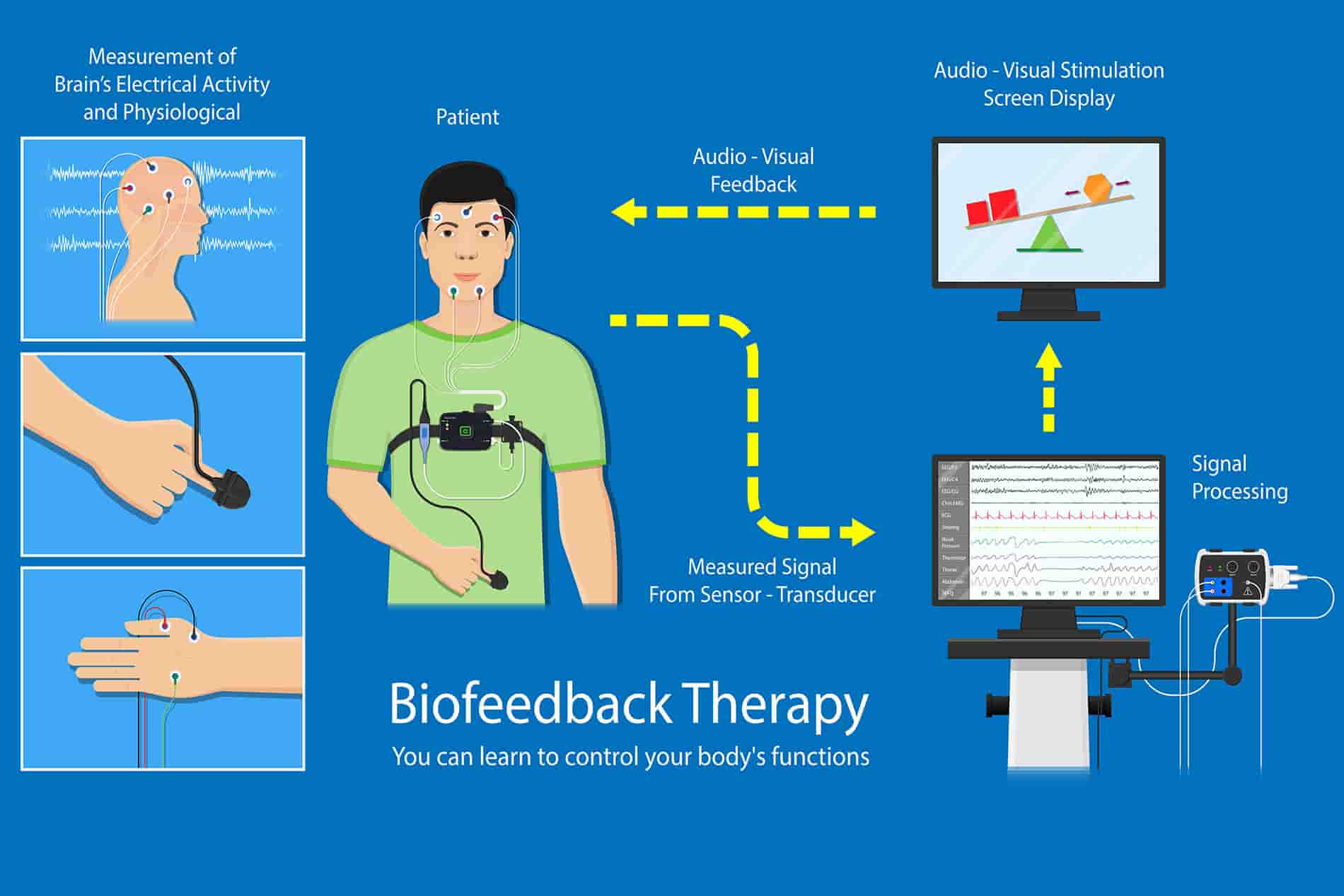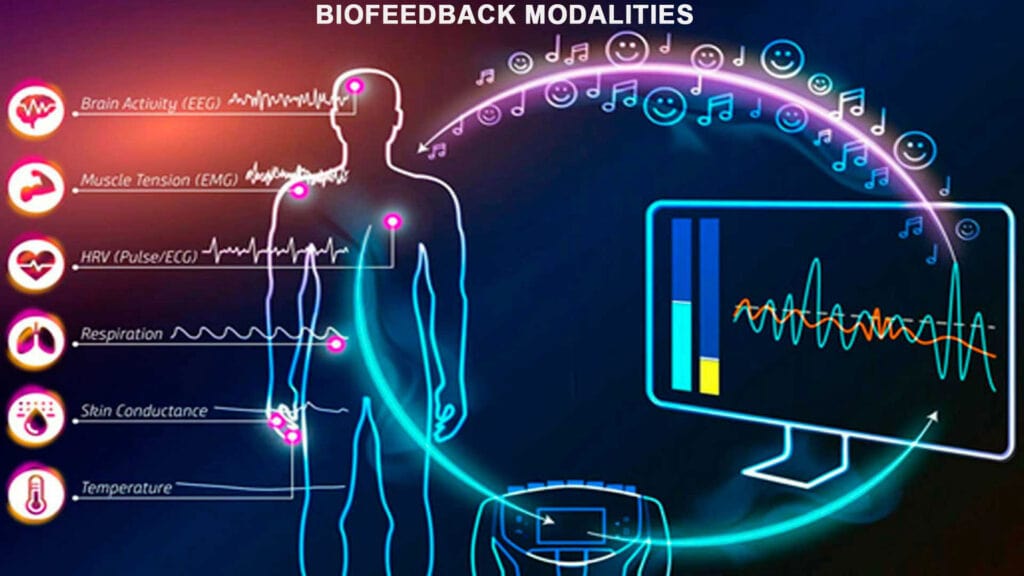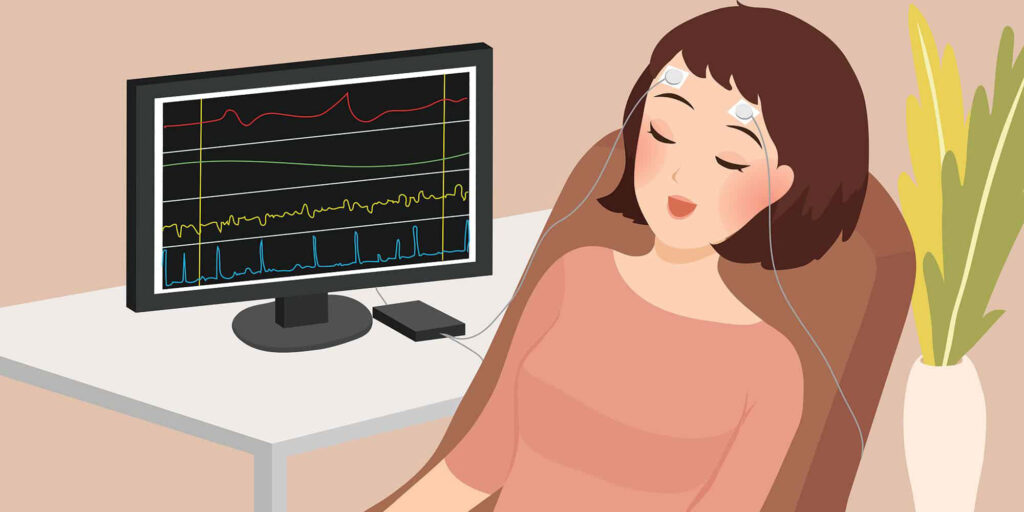BIOFEEDBACK: NEW VISION FOR PAIN MANAGEMENT
Pain is the most common reason people in the U.S. seek medical care. Pain medications impact people negatively. Thus, researchers are trying every day to develop a non-invasive effective method to counter pain.
Biofeedback therapy helps in managing pain by using sensitive electronic instruments to measure a person’s bodily processes, such as heart rate, and then feeds back that information to you.

WHAT IS BIOFEEDBACK?
We perform a lot of voluntary daily activities such as raising your hand to wave to a friend or lifting your knee to take another step. But, some functions such as heart rate, skin temperature, and blood pressure are controlled involuntarily by your nervous system. The “fight or flight” response includes the nervous system, including the sympathetic nervous system that is responsible for adrenaline secretion. The response is the result of severe stress that would be activated by a stressor like a pain flare-up. In response to the stress, the nervous system increases sympathetic activity, including increased heart rate, sweating, and muscular strength, which prepares you to face or avoid the pain.
One technique that can help you gain more control over certain involuntary functions is known as biofeedback. This therapy helps in preventing or treating various medical conditions, including migraine headaches, chronic pain, incontinence, and high blood pressure. Biofeedback focuses on harnessing the power of your mind and making you aware of what’s going on inside your body. This would help you can gain more control over your health and reduce pain.
Biofeedback is beneficial to conditions initiated or worsened by stress that makes internal processes overactive. Biofeedback therapy is the use of instrumentation to mirror psycho-physiologic processes, which an individual is not normally aware of but may be able to bring under voluntary control.
The biofeedback instruments provide immediate information about your biological conditions, including brainwaves, heart function, breathing, muscle tension, temperature, and galvanic skin response (or sweat). The feedback enables you to become active in the process of health maintenance. Over time, these changes can endure without continued use of the instruments.
Biofeedback helps to reduce, or sometimes even eliminate, the need for medication for pain management. Biofeedback also recommends you take an active role in your healing, which is consistent with the self-management model of chronic pain.

HOW DOES BIOFEEDBACK THERAPY WORK?
Biofeedback promotes relaxation that would relieve several conditions related to stress.
The healthcare provider would attach electrodes to your skin and sensors to your fingers, during a biofeedback session. These electrodes and sensors send signals to a monitor, which displays a sound, flash of light, or image representing your heart and breathing rate, blood pressure, skin temperature, sweating, or muscle activity.
Under stress it is observed that these functions change such as a change in heart rate, tightening of muscles, increase in blood pressure, sweating, and increased breathing. These stress responses are recorded on the monitor, and then get immediate feedback as you try to stop them.
A biofeedback therapist trains you for relaxation exercises that help to control different body functions. You might use a relaxation technique to turn down the brainwaves that activate when you have a headache.
Various relaxation exercises that are used in biofeedback therapy, including:
- Deep breathing.
- Progressive muscle relaxation involves tightening and then relaxing different muscle groups, alternatively.
- Guided imagery helps in concentrating on a specific image to help focus your mind and make you feel more relaxed. These would include the color and texture of an orange.
- Mindfulness meditation helps you focus your thoughts and let go of negative emotions.

WHAT ARE DIFFERENT TYPES OF BIOFEEDBACK?
Biofeedback is categorized as peripheral biofeedback and neurofeedback. These are beneficial in reducing a wide range of chronic pain conditions.
- Peripheral Biofeedback: This type of biofeedback therapy focuses on self-regulation over the Autonomic Nervous System along with, the Sympathetic and Parasympathetic Nervous Systems (SNS & PNS).
- Neurofeedback: This therapy teaches self-control of brain functions to subjects by measuring brain waves and providing a feedback signal. Neurofeedback provides feedback in the form of audio and or video results.
Different types of tests are used to monitor different body functions:
- Electromyogram (EMG): This test helps measure muscle activity and tension that helps in treating back pain, headaches, anxiety disorders, muscle retraining after injury, and incontinence.
- Thermal: This test helps measure skin temperature, which is used for headaches and Raynaud’s disease.
- Electroencephalography (EEG): This test helps measure brain waves that may be used for attention deficit hyperactivity disorder (ADHD), epilepsy, and other seizure disorders.
- Electrodermal activity (EDA): This test provides details about sweating that is helpful for pain and anxiety
- Heart rate variability (HRA): This test helps measure heart rate that may be used for anxiety, asthma, chronic obstructive pulmonary disease (COPD), and irregular heartbeat.
Benefits of biofeedback include:
- It is non-invasive.
- It reduces or eliminates the need for medications.
- It enhances the benefits of medications.
- It helps women who are not able to medication during pregnancy.

HOW TO USE BIOFEEDBACK TO TREAT CHRONIC PAIN?
Stress leads to pain and it eventually becomes a vicious cycle. When you are in a state of prolonged stress, you’re stuck in a state of ‘fight or flight’. But, when stress becomes chronic, it starts to take its toll on our bodies.
Chronic pain – The biofeedback helps relieve the discomfort of conditions like low back pain, abdominal pain, temporomandibular joint disorders (TMJ), and fibromyalgia. For chronic pain relief, biofeedback can benefit people of all ages, from children to older adults without any side effects. Biofeedback helps in relaxing the muscles, reducing mental issues, perception of pain, proper sleep, and reducing inflammation.
3 stages occur during the biofeedback training.
- First stage: This stage involves you gaining awareness of the problematic physical response. People in this stage identify how their bodies respond to a variety of stressors and determine the ability to overcome the undesired physical reactions.
- Second stage: This stage uses the signals from the biofeedback to control the physical responses. The therapist would help you to reach certain goals related to managing a specific physical response.
- Final stage: This stage help you transfer control from the biofeedback equipment to yourself. The therapist would learn through trial and error to identify triggers that alert you to implement the self-regulation skills they learned. At the end of treatment, you would be trained to practice the mental exercises daily to control chronic pain.
Headaches – Muscle tension and stress can trigger migraines as well as other types of headaches and can make worsen headaches. Biofeedback therapy helps relax muscles and ease stress to reduce both the frequency and severity of headaches. Biofeedback is beneficial for headaches when it’s combined with medications.
Other biofeedback uses include:
- Attention deficit hyperactivity disorder (ADHD)
- Chronic obstructive pulmonary disease (COPD)
- High blood pressure
- Raynaud’s disease
- Injury
- Asthma
- Constipation
- Epilepsy
- Rheumatoid arthritis
OUTLOOK
Biofeedback therapy is generally safe, but it might not be appropriate for everyone. Biofeedback devices might not work properly on people with certain medical conditions, such as heart rhythm problems or certain skin conditions. It is important to discuss the details about biofeedback with your doctor first.
People Also Read:
- Difference Between Acute Pain and Chronic Pain
- Cancer Pain – Causes, Symptoms and Treatment
- Chronic Neuropathic Pain – Causes, Symptoms and Treatment
If you or anyone you know is suffering from pain, our expert providers at Specialty Care Clinics will take care of your health and help you recover.
Call us on (469) 545-9983 to book an appointment with our specialists.
